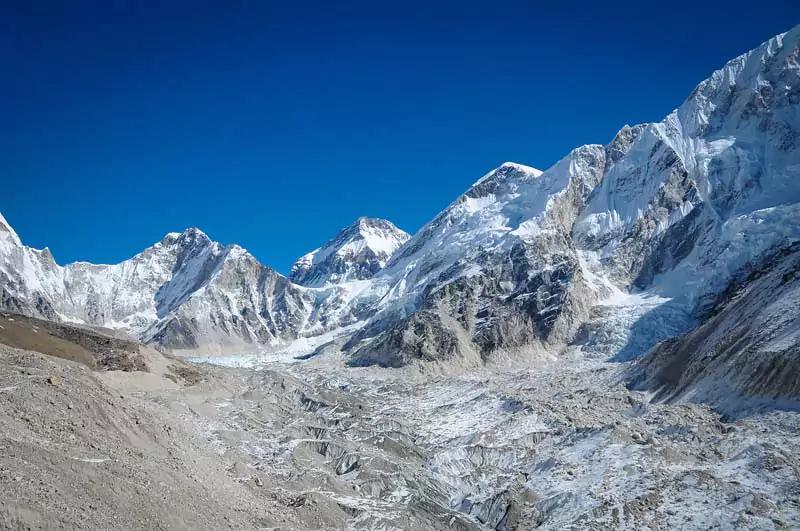Image Credit: flickr.com
The Himalayan ecosystem may be very sensitive, and the environmental balance of the vicinity is very crucial. One such issue is waste management, which is important when trekking to Everest Base Camp (EBC). Ass a result of increasing numbers of site visitors, local environments have paid the rate, sowe must havee minimal effect as we move.
Begin with the aid of seeing if you could generate less waste. Truly, say no to single-use plastics, along with water bottles, baggage, and packaging. As an opportunity, convey empty, reusable water bottles and purification devices (filters or capsules). Consider conveying your tote luggage and bins for snacks or meals. Leave No Trace Always hand carry out what you hand carry in; never leave litter on the trail or at camps/comboes. Exercise common sense. Many tour operators and lodges used are signed up to waste disposal and recycling, so play your part and chuck your rubbish in the correct places.
Bring biodegradable toiletries and avoid chemical soaps, which contaminate the local water sources. When you’ve got to go, follow the “pack it in, pack it out” rule and rely on the handful of toilets provided (or portable waste bags if the toilets aren’t available).
Why is it Vital when trekking to Everest Base Camp?
Handling waste alongside the EBC trek is vital to assist in maintaining the herbal splendor of the Himalayas in Nepal. Increasing numbers of trekkers have added rubbish and pollutants to this fragile environment. Terrible waste control can bring about the pollution of water sources, damage to neighborhood flora and fauna, and the blighting of the natural splendor that tourists come to see. Fromana an accountable waste-management point of view, that still method easy trails, teahouses, and villages, and assisting neighborhood tourism-established groups. Using a ban on staple items. Trekkers leave mixed waste at this destination, leading to reduced waste discharge and less negative environmental impact. Concepts and methods of 2. Abiding by the strict rules of EBC, you can. We, however, get to continue the adventures of the Eother BC trek for the future with a green and fresh mountain region to enjoy.
Well, What Types of Garbage Do You See On An EBC Trek?
The important types of waste produced on the way to Everest Base Camp encompass plastic bottles, meal wrappings, uneaten meals, and human excrement.” Single-use plastic is specifically problematic because it takes loads of years to decompose, and is typically found on trails and in villages. Scraps and other natural waste can attract pests if not disposed of properly. Human waste is a sanitary threat that may pollute water assets if not secured in rest room homes or portable toilets. Trash type helps trekkers understand how to keep their trash to a minimum, bundle it, and dispose of it in an eco-friendly manner along with their trek.
“Everest Base Camp for Trekkers – What can you do to minimise your plastic consumption”?
Trekking responsibly also means keeping plastic rubbish to a minimum. Buy Single-use plastic bottles: Trekkers should invest in a decent reusable water bottle and hydration system and avoid buying single-use plastic bottles. You could replenish it correctly in the wild with water purification capsules/filters. Use resealable packing containers instead of plastic baggage for snacks. Skip the stuff that’s wrapped in too much plastic and disposable bags. A few inns will even help you replenish your water bottles and toiletries, so be sure that you don’t purchase new ones. Deliver eco toiletries (assume bamboo toothbrush, biodegradable cleaning soap) to cut down on plastic use. There are lots of small modifications that could make a massive difference in terms of tackling plastic pollutants whilst hiking with EBC.
What do you do with human waste while on the EBC Trek?
Sanitary sanitation is vital on the Everest Base Camp trek: By doing so, you’re not only helping to avoid the land getting polluted, but also the water source. There are toilet facilities, usually of a primitive nature, at most tea stops along the way (Drinking water, especially in the upper region of the trekking route, is bottled and boiled, and we can drink it.). *Use allocated toilets when possible. Open defecation in non-facility locations. Just In- Case items: The includedWAG BAG toilet kit is for use in the portable toilet bag system – an environmentally responsive disposable replacement bag system that safely contains the waste and seals in odors; can be pitched in a normal trash containeranywhere, a common bagThe biodegradable bag is good for 4 uses; the amount of waste is up to 24 oz. Do no longer defecate inside the open or close to sources of water. Convey hand sanitizer and punctiliously wash hands after using the use of restrooms at all times. A good human waste disposal system is also important to maintain good hygiene, maintain water quality, and for eco-trekking.
WHAT HAPPENS TO NON-BIODEGRADABLE TRASH OF TREK?
Hikers must not forget to bring a so-referred to as trash bag, so that everyone’s non-biodegradable waste, such as plastic, wrappers, band atteries, can be taken back from the park. To assist in holding your environment and the individuals who occupy it, do not drop trash or burn trash along the path. Most resorts have trash disposal regions, but many are not extremely good at recycling, so for this type of aspect, it is most appropriate to take it with you to larger villages like Namche Bazaar or Lukla, so the trash can be treated properly. Some trekking groups even arrange waste series and recycling applications—take part or assist such initiatives to help keep paths clean. If all and sundry would surely create less trash and nicely dispose of it, it’s going to assist hold the EBC and make certain that it’s around for future hikers to enjoy.
Is It Possible to Recycle on the Trek to Everest Base Camp?
The recycling on the Everest Base Camp trek is small but gradually improving. A few of the larger villages, such as Namche Bazaar and Lukla, have some form of recycling, funded by trekking companies or local NGOs.Recyclable items such as plastic bottles and aluminum cans will also be removed from the trail, and trekkers will carry them to the collection points. But most backcountry tea houses don’t have recycling facilities, so for now, the next best thing you can do is minimize your waste generation and pack out as much as you can. When we sort the recyclables as we should and have the recyclable items delivered to local recycling programs, it not only helps local recycling programs, but it also results in less trash being thrown away and dumped in landfills. # Hiking with a green conscience. This walk helps green living in the area.
How are people seeking to clean Mount Everest?
Several mountain climbing teams, government parties, a nd trekking companies have been engaged in a cleanup on the Mount Everest Base Camp Tour. Some are mandatory permits that require climbers to haul out a specific quantity of garbage, clean-up expeditions initiated post-climbing season, and public awareness campaigns about responsible waste disposal. Local communities and nongovernmental organizations participate in regular garbage collection drives, and tons of garbage are taken off base camps and well-traveled routes. Advancement of technologies, as the collection of human waste, is facilitated. There are hefty fines for not taking care of your mess. Collective efforts aim to keep Everest wild, and to encourage sustainable tourism so that the mountain \(remain can\ continue to serve as a beacon of natural beauty for centuries to come.





